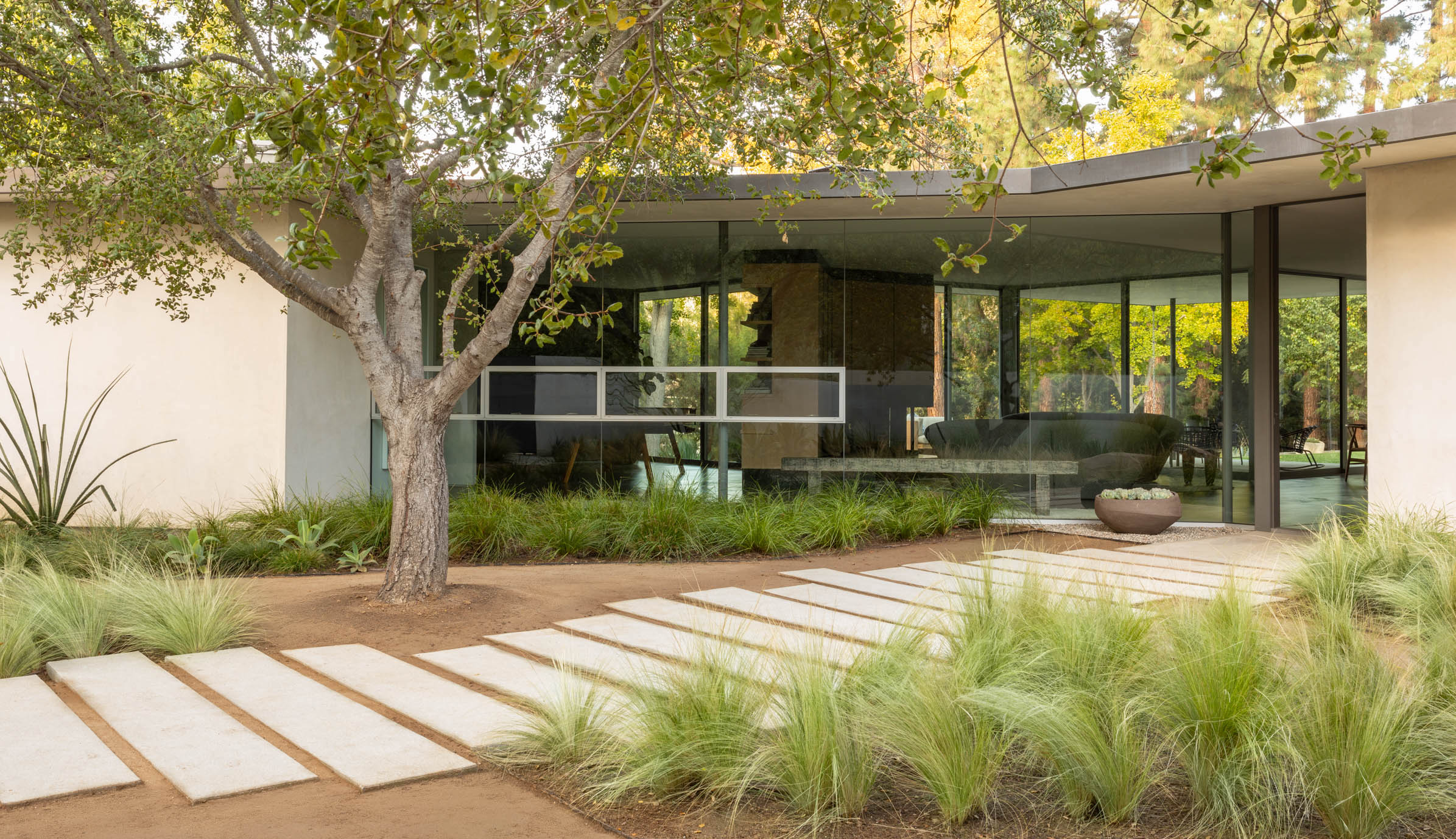
Designing a garden takes time and consideration, from the patio and pathways to the plantings. Once you've decided on a layout, it's time to consider the materials to use in your outside space. So these are the hardscaping materials designers say you need to know about for paths, patios and walls.
'While hardscape materials can be expensive, they form the backbone of any design, so take time to consider which types will be best for your garden,' says designer Manoj Malde, author of Your Outdoor Room. 'Bear in mind that your hardscaped areas are the backdrop to your planting scheme and should play a secondary role to the plants.'
So, what hardscaping materials are designers using now? And which should you look at for your own landscaping ideas? We asked the experts to offer their top picks.
Which hardscaping materials should I choose?
'You may want the colors, tones or textures to match, or work in total contrast to your home,' says landscape designer Manoj Malde. 'As well as the cost, consider durability, maintenance and sustainability. Select materials that will stand the test of time and avoid going with a trend that will be difficult to alter as fashions change.'
1. Decomposed granite
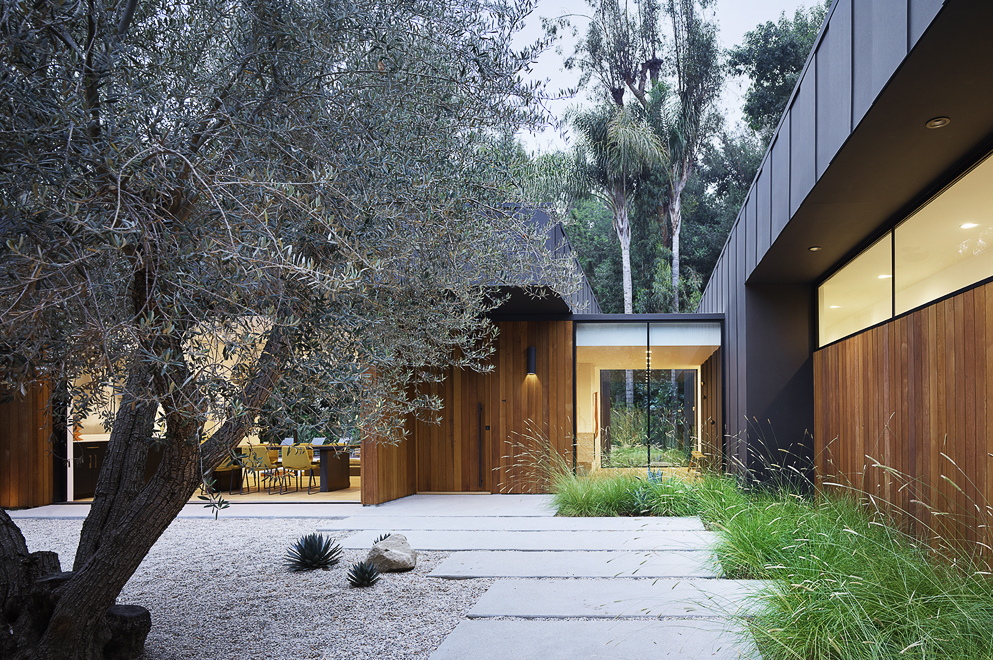
What may look like gravel may actually be something called "decomposed granite". Decomposed granite can be used as an alternative to gravel; it's natural, permeable and attractive. Although finer than gravel, the particle size can vary and the colors range from sand tones to grey, black, red and green.
It can be bought as natural, stablilized or resin-coated versions. Natural decomposed granite is good for mulch, while stabilized granite is suitable for garden paths and patios, and the latter makes a good option for a permeable driveway.
'The natural stone colors of decomposed granite complement a landscape and contrast with nearby foliage, making plants look more richly green and textured,' says David Thompson, principal and founder Assembledge+.
2. Natural stone
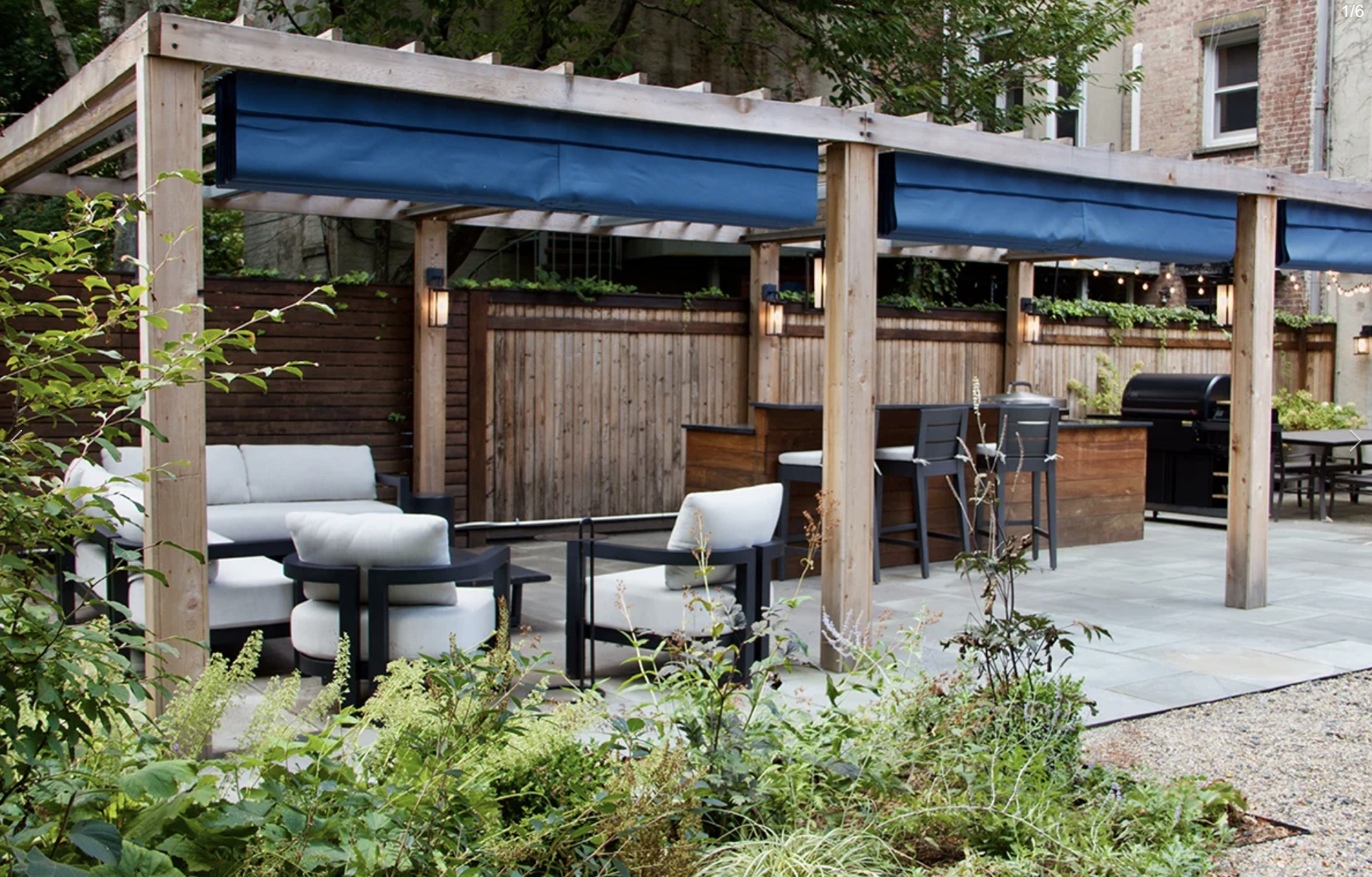
Natural stone is popular for patios and garden paths, but there is much choice and different types of stone have different qualities, so what to choose?
Stone, obviously, is a heavy material, so consider varieties local to your region. This will not only blend better with the surrounding landscape, it will reduce delivery costs and the carbon footprint from transportation.
Bluestone is a favorite choice for New York-based landscape designer, Kat Aul Cervoni, founder of Staghorn NYC and The Cultivation by Kat. 'I often select bluestone for patios for its durability, timeless beauty and the fact that it is local to the Northeast - where the majority of our projects are,' says Kat. 'It comes in a number of different colorways - from shades of blues and grays, to purple and full-color, which includes interesting browns and reds.
'I tend to stick with blue-grays, as it serves as a calming neutral base for the garden. For a more modern aesthetic, I’ll select a thermal finish, which is perfectly smooth on the surface and edges and use same-size rectangles.
'If a more traditional look is desired, I’ll go with an ashlar pattern and use a natural cleft, which has the stones natural texture on the surface of the paver. For a rustic aesthetic, I’ll go with natural cleft flagstone pieces that are completely organically shaped.'
In the UK, garden designer, Manoj Malde has a preference for limestone. 'I love natural materials for their inherent characteristics, such as the natural strata lines in stone and the grain in wood,' says Manoj. 'I favour limestone, which is highly durable and has a smoother finish than sandstone.
'When looking at materials or ordering products for your garden, remember to ask the supplier for lead times for delivery. This information will help you to order goods in time and prevent delays, especially if items need to be sent from abroad.'
'I love the look and feel of natural stone too,' says Los Angeles-based landscape designer, Andrea Scharff, founder Andrea Scharff Landscape. 'It feels good underfoot, looks beautiful and gives a custom luxe feel to your outdoor space.'
3. Clay pavers on gravel
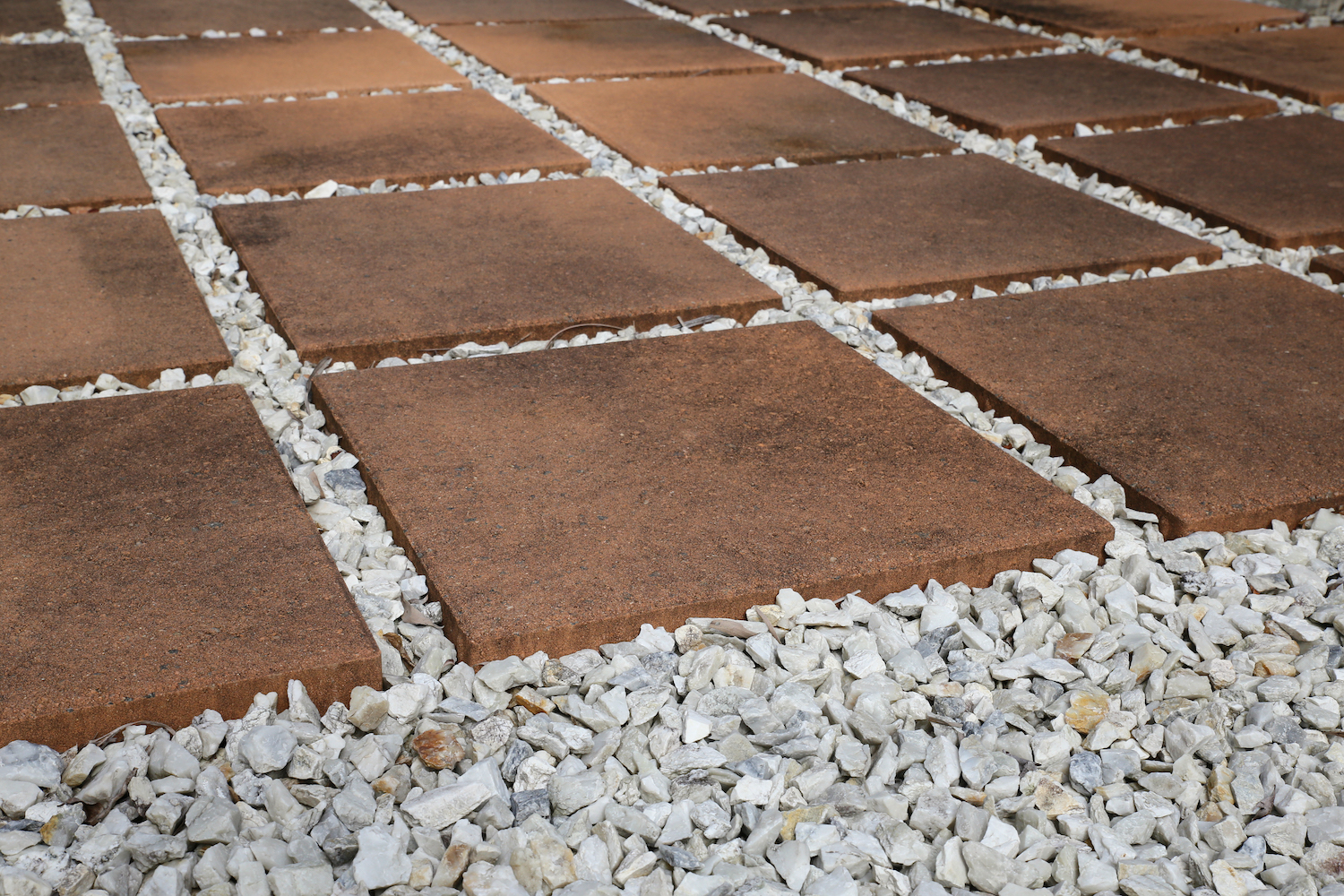
It's important to use permeable materials in a landscape design, as non-permeable materials, such as stone and concrete, contribute to flooding — as rainwater has to flow into local drains, rather than soak into the soil, as it would naturally.
'Clay pavers are beautiful and I love using them,' says garden designer Manoj Malde, and they also make a good companion for some gravel landscaping ideas. 'However, to make sure the surface remains permeable, lay them on an unbound sub-base of crushed stone and fill the joints with free-draining aggregate such as sand or gravel.'
'Pavers laid over a bed of sand or gravel is known as dry laying. This method allows water to pass through the gaps between each paver. You can also allow moss, grass, thyme or baby's tears (Soleirolia Soleirolii) to grow in the gaps, which is a great way to breath life into hardscaping, that may otherwise look quite harsh and sterile.'
'Gravel provides excellent drainage and is suitable for pathways, large areas, or as a base layer for other materials,' says David Thompson of Assembledge+. 'Its organic form is great for homes with an indoor/outdoor feel.'
4. Porcelain
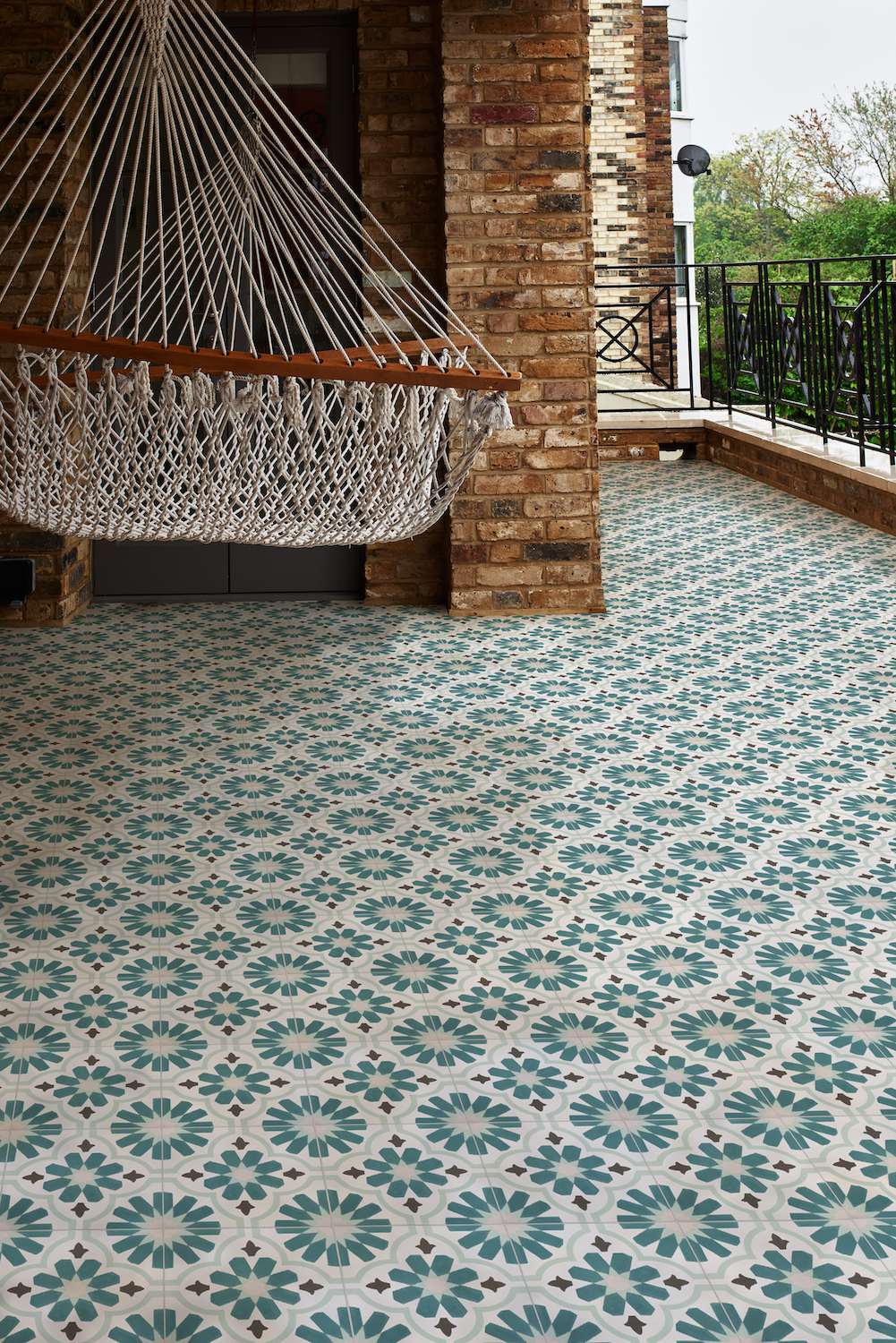
Porcelain is a popular choice and can be used as an alternative to natural stone. It's less expensive and is available in a wide choice of finishes. These range from colorful geometric tile patterns to neutral stone-effect styles. It's also possible to create a seamless indoor-outdoor look using frost-proof outdoor versions of indoor tiles.
'I’m a big fan of the versatility of porcelain pavers as well as their durability,' says Kat Aul Cervoni. 'They come in an enormous variety of colorways and textures to mimic the look of everything from travertine, to terrazzo, to bluestone, to cement.
'Porcelain pavers can be used on weight-sensitive rooftops and balconies on a pedestal system, or installed the same way as tile or bluestone on-grade.
'I love that they’re not prone to absorbing heat, so are comfortable to walk on even in the height of summer. They’re also extremely dense and non-porous so easy to keep clean.'
5. Concrete
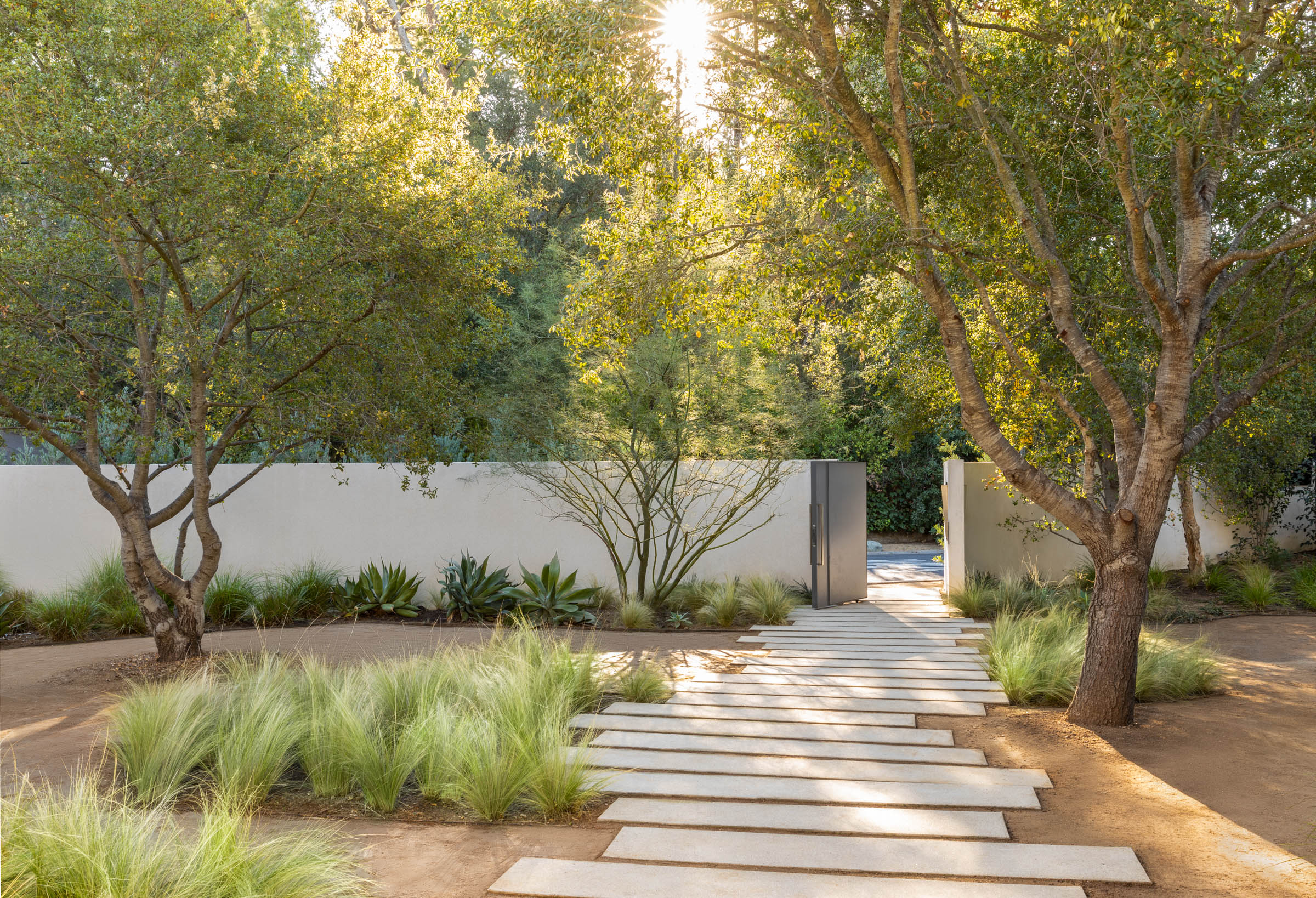
Although often considered an 'urban' material due to its prevalence in cities, concrete can also work well in green spaces when used with consideration and care.
'Concrete is a great material to use for many different applications in the garden,' says New York-based landscape designer Jonathan Fargion. 'I always recommend using a concrete base to stabilize stepping stones which would move with time as the soil shifts.
'Also concrete can be used for retaining walls and if poured well it can have the wood vain impression, assuming a very naturalistic form.'
'Concrete pavers are ideal for creating pathways or patios and can be made in any shape or color to match your home,' says David Thompson, Assembledge+. 'We like to use them in the front yard, creating a meandering path that leads to the entry of the house.
'A board-form concrete wall can also capture the texture and pattern of wood grain, creating unique and organic imprints on the concrete surface. Using wood as formwork is a sustainable option compared to plastic or metal, which are often not reusable and have a greater environmental impact. This type of concrete surface texture lends itself well to modern design projects.'
How many hardscape materials should I use in my backyard?
While there are a lot of materials to choose from for hardscaping, limiting your palette will help keep the space cohesive.
'Using too many different materials creates division in a garden, so limit your choice three,' suggests designer Manoj Malde. 'This will bring cohesion to your design and ensure different areas work in harmony together.'







